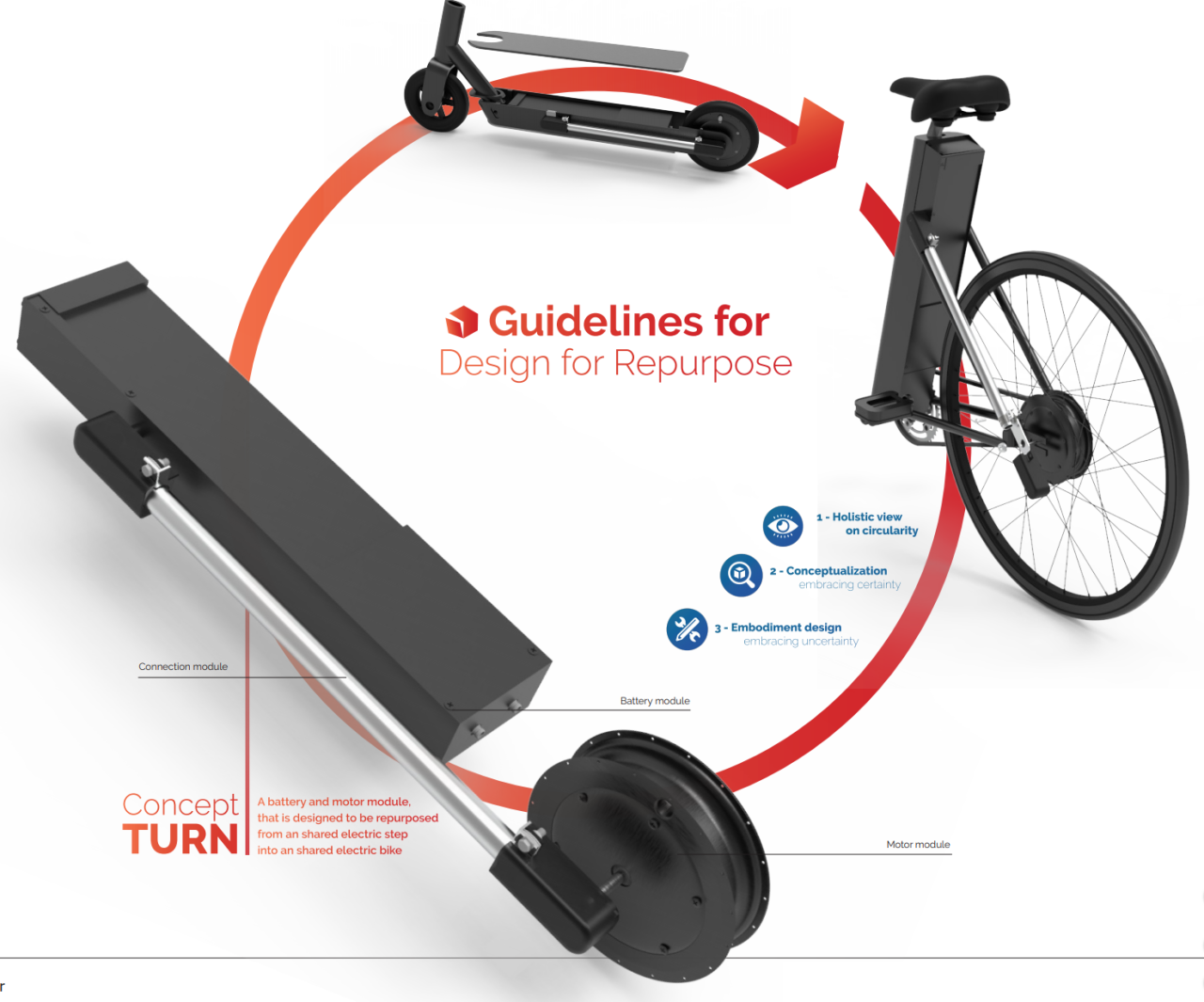Design for Repurpose towards a circular economy
Apr 2020 - ongoing
By: Schild, Tom

Repurpose often a reactive process
Repurpose, the reuse of (parts of) obsolete products in new applications seems a promising strategy towards a circular economy because products can be (partly) reused without applying any energy consuming recycling process, which often results in a loss of material quality. As repurpose is a strategy to retain value, the process is applied after the product has been used. This can make repurpose a challenge strategy as products are not created with repurpose in mind.
Circular design guidelines to Design for Repurpose
Circular product design could be an answer to use repurpose more effectively as products could be designed at forehand to be repurposed. Within this graduation project, the aim was to:
Create a set of guidelines for repurpose design, so designers and companies can get guidance in how to circularly design products for repurpose, to optimally reuse and retain material value.
Practical and theoretical research on Repurpose and Repurposed products
Literature research was done regarding the circular economy, the value hill and the topic of repurpose. Next to that, an explorative study was performed to gain insights in the practical approach of design and repurpose. This was done by investigating repurpose examples and conducting semi-structured interviews with (repurpose design) companies, on the topic of repurpose and design for repurpose.
First set of guidelines for designers
After that, the theoretical and practical insights on the topic of design for repurpose were gathered and formed into the first set of design for repurpose guidelines. Hereby Design for Repurpose towards a circular economy two different tactics for design for repurpose were identified. One open ended approach repurpose approach (embracing uncertainty) and one close ended repurpose approach (embracing certainty).
Testing guidelines with design case
In the design phase, these new guidelines in design for repurpose were tested, by applying them in a design for repurpose case study. In cooperation with Springtime Design, a shared electrical step was chosen as the initial product. By applying the guidelines, the e-step was analyzed and the focus was given on repurposing the battery and motor components. By following the guidelines, a new suitable product was found in the form of a battery and motor module for an e-bike. By applying the guidelines of embodiment design, the concept TURN was developed.
Design of concept direction TURN
The potential of the design for repurpose guidelines was captured in the concept TURN, a repurposable motor and battery module for a shared electrical step. By three distinguishable functional modules, TURN is designed to be easily reconfigured from an e-step motor and battery into an e-bike motor and battery.
Evolved set of guidelines towards a circular economy
By evaluating the design process of TURN, a revised set of the guidelines was created. Based on the design process of TURN, it could be concluded that the guidelines for design for repurpose could serve as a base set of guidelines to provide guidance for designers and companies in how to circularly design for repurpose. Although it is expected that these guidelines will contribute in a positive way of optimally reusing and retaining material value, real cases need to be executed in order to validate its real impact, towards a circular economy.
Supervisors
Prof. dr. ir. Bakker, C.A.
Ir. Crone, H.E.C.